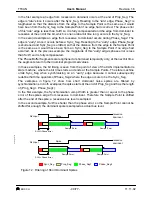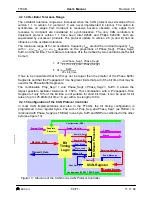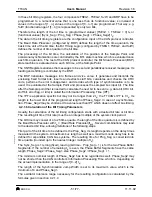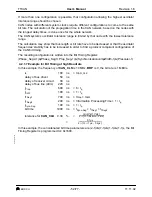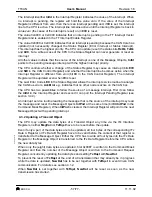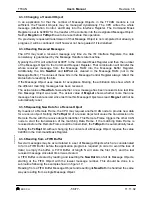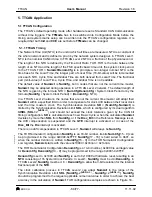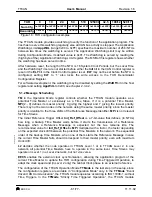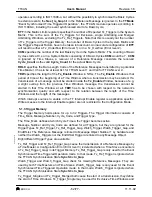
User’s Manual
BOSCH
- 52/77 -
Revision 1.6
TTCAN
11.11.02
manual_about.fm
If more than one configuration is possible, that configuration allowing the highest oscillator
tolerance range should be chosen.
CAN nodes with different system clocks require different configurations to come to the same
bit rate. The calculation of the propagation time in the CAN network, based on the nodes with
the longest delay times, is done once for the whole network.
The CAN system’s oscillator tolerance range is limited by that node with the lowest tolerance
range.
The calculation may show that bus length or bit rate have to be decreased or that the oscillator
frequencies’ stability has to be increased in order to find a protocol compliant configuration of
the CAN bit timing.
The resulting configuration is written into the Bit Timing Register:
(Phase_Seg2-1)&(PhaProp_Seg-1)&(SynchronisationJumpWidth-1)&(Prescaler-1)
4.2.1.7 Example for Bit Timing at high Baudrate
In this example, the frequency of CAN_CLK is 10 MHz, BRP is 0, the bit rate is 1 MBit/s.
t
q
100
ns
= t
CAN_CLK
delay of bus driver
50
ns
delay of receiver circuit
30
ns
delay of bus line (40m)
220
ns
t
Prop
600
ns
= 6 • t
q
t
SJW
100
ns
= 1 • t
q
t
TSeg1
700
ns
= t
Prop
+ t
SJW
t
TSeg2
200
ns
= Information Processing Time + 1 • t
q
t
Sync-Seg
100
ns
= 1 • t
q
bit time
1000
ns
= t
Sync-Seg
+ t
TSeg1
+ t
TSeg2
tolerance for CAN_CLK
0.39
%
=
=
In this example, the concatenated bit time parameters are (2-1)
3
&(7-1)
4
&(1-1)
2
&(1-1)
6
, the Bit
Timing Register is programmed to= 0x1600.
min PB 1 PB 2
,
(
)
2
13
bit time
PB2
–
×
(
)
×
----------------------------------------------------------------
0.1
µ
s
2
13
1
µ
s
0.2
µ
s
–
×
(
)
×
-----------------------------------------------------------












